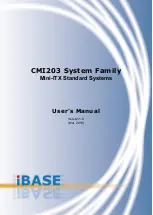
Lucent Technologies Lineage
®
2000 25A Ferroresonant Rectifier J85502A-1
6 - 20 Testing
Issue 4 May 1998
6. The OUTPUT meter reading should agree with the test
meter within 0.02 volt for Series 3 CM3 boards or within
0.5 volt for Series 1 and 2 CM3 boards. If the reading is
not within these limits, refer to “Calibrate CM3 Digital
Meter” in Section 7 to calibrate the meter and repeat this
procedure from Step 1.
7. If the rectifier meter cannot be calibrated, replace the
rectifier CM3 digital meter board as described in
“Replacing CM3 Digital Meter Board” in Section 8 and
repeat this procedure from Step 1.
8. Disconnect the DMM from the rectifier.
Adjusting
Rectifiers to
Float Voltage
Float voltage is the optimum voltage level at which a battery
string gives maximum life and full capacity. This voltage
depends on the type and number of batteries in a plant.
Float voltage per cell
×
number of cells = battery string
float voltage
Traditionally, 2.17 volts per cell is the float voltage for flooded
lead-acid batteries such as the Round Cell. For a 24-cell
configuration of Round Cells, string voltage is
2.17
×
24 = 52.08 volts
Traditionally, 2.27 volts per cell is the float voltage for starved
electrolyte batteries such as VR cells. For a 12-cell configuration
of VR cells, string voltage is
2.27
×
12 = 27.24 volts
To adjust rectifiers to the pre-determined float voltage, the
rectifiers must be on line with plant cables connected and REG
fuses installed in the plant controller or a remote bay.
Note
Series 3 CM3 boards can be identified by the designation
“AM3” (or greater than 3) which is stamped on the wiring
(noncomponent) side of the board. A partial sketch of the
CM3 boards is provided in Figure 7-1.
















































